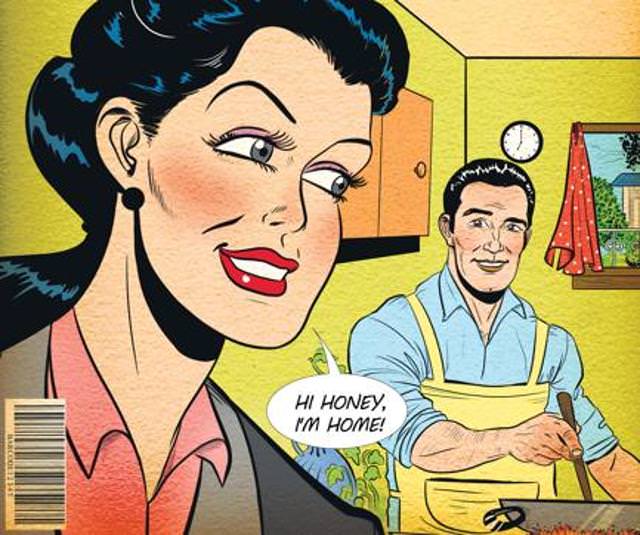Before Bollywood sauntered on to the scene, India discovered gender reversal through ads, Facebook campaigns and web series.
When mainstream Bollywood decided it was ready to talk about gender roles and bust stereotypes, it made everyone take notice. It made sense. We still make an unhealthily large proportion of regurgitated masala, but in recent times, we’ve heard other, critical voices too. We’ve learnt to celebrate the independent Indian woman (Queen, Piku, Angry Indian Goddesses), and deal with LGBT issues (Aligarh, Kapoor & Sons). Ki & Ka (released on April 1), with its take on gender reversal — not novel as a concept, but refreshing, nevertheless — would be another reason to celebrate the brave new face of Indian cinema.
Done right, it would be an important step. Because short of flashing gender equality messages on the giant screen at cricket matches, what else reaches the masses like Bollywood? It had the right ingredients too: mainstream actors with incredible fan bases; a big production house; and a responsible director in R Balki, who you’d trust with themes such as these.
Unfortunately, the opportunity was squandered. Rather than breaking stereotypes, it ended up reinforcing them. Think Stone Age in reverse, with the woman playing hunter-gatherer, and the man the keeper of the cave. The woman is ambitious but ruthless and messy, while the man gives fitness lessons to kitty party girlfriends. You take my clichés, I take yours. Let’s call it even?
What is interesting, however, is what’s led us here. Formula-hunting Bollywood rarely leads, but follows. So, a lot of the smaller factors that enabled us to even attempt such conversations deserve attention. We’re talking art, performances, Facebook campaigns, even advertising that’s paved the way globally, and closer home.
The rise of Femvertising
Unless you were without Wi-Fi around Women’s Day (March 8), you couldn’t have missed the deluge of women-centric ads, or femvertising, as the coinage goes. For instance, Titan’s ad about ‘Kiran’ who’s climbing the corporate ladder and is eventually revealed to be a man; Ariel’s ‘#Sharetheload’ campaign, that has a father apologise for never having shared household duties (it won the Glass Lion at Cannes, 2015), or Airtel’s ad about the woman boss and the husband as a subordinate employee.
Biba’s ‘Change the conversation’ campaign, in December last year, was one of the earlier ones to reverse gender roles. When a boy and his family come to see a girl, he’s quizzed on what he can cook. “My daughter can’t survive on [instant] noodles,” the father says. The message is clear: roles are changing, and you better keep up. Interestingly, the campaign was created solely for the web. Suva Ghosh, MD and CCO, BrandMovers (who created the ads), says the web has been a game changer. The interactive nature of social media is making ad film-makers think of sparking conversations rather than using pretty faces to hard sell clothes, shoes and cola. Ghosh says, “The intent was not to showcase products. You couldn’t even tell what was advertised. But if you take an issue, and then make a statement, more people will engage with it.”
Internationally, too, femvertising has been a major force over the last two years. Remarkable examples include Always’s (female hygiene brand) ‘#LikeAGirl’ campaign (61 million views on YouTube), which sharply reverses gender perceptions by asking kids and adults how one “runs/kicks/throws like a girl”; and Verizon’s ‘#InspireHerMind’ (4 million views), which criticises how we tell little girls to behave a certain way. Again, all of it found its popularity on the web.
Let there be Internet
The wonderfully radical nature of the web allows conversations that traditional media — with its hard-earned conventional audiences — often shies away from. Cutting through the clutter of cat and pop star videos that go ‘viral’, was the story of 23-year-old Harnaam Kaur. The UK-based model and body positivity campaigner suffers from severe polycystic ovary syndrome, which leads to excessive body hair. She posed for a bridal shoot, challenging beauty norms, and stereotypes of what women are supposed to look like. She took to Instagram to make herself heard: “I was laughed at when I said I wanted to model. Jokes on my bullies (sic).”
But the web isn’t just acting as a new platform. It’s creating new formats, such as the web series. Not surprisingly, a genre born in the times of free debate and virtual activism must make its own statements.
The web series Man’s World (September, 2015; by heavyweight production house Yash Raj Films’ youth division, Y-Films) also reversed clichés, but heightened them to show the irony. “The tonality matters,” says Ashish Patil, business and creative head, YRF. Man’s World saw its chauvinistic male protagonist wake up one day to a world where women behave like men and vice-versa — the stereotypes of each gender presented fantastically, like in a parallel universe. They dedicated episodes to gender discrimination at work, sexual harassment, and marital mandates.
Come May, yet another web series – a reality show, this time – is set to put women and men in each other’s shoes. Arre’s Ho Ja ReGender will see six participants (three men, three women) swap identities, prosthetics and all. In offices and public spaces, their interaction with the world, and the much-debated male gaze, will be captured through hidden cameras.
Web series: two. Bollywood: zero.
Humour: the one formula that works
What works for Man’s World, and what’s missing in Balki’s film, is humour. From literature and theatre to newer mediums like stand-up comedy, satire has been a great weapon to disrupt and entertain at the same time.
Online campaigns, like the Facebook page The Spoilt Modern Indian Woman, have followed suit. Their two-part meme campaign earlier this year saw crowd-sourced photographs of women with captions that led with a stereotype, only to turn it on its head. “I really wanna settle down… with a glass of wine…“. And so on.
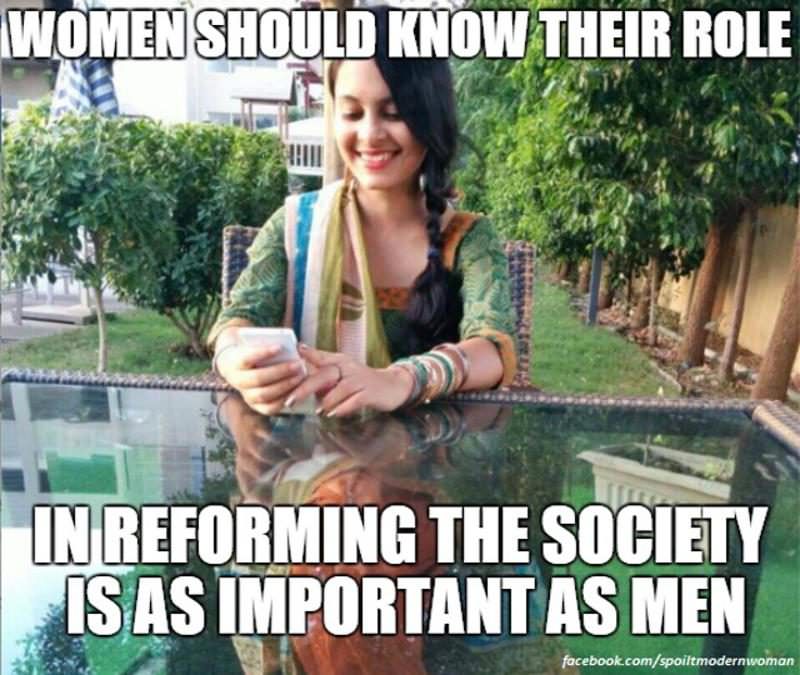
“Instead of assuming a serious tone and coming across as preachy, we thought it’d be better to respond to stereotypes with feminist jokes,” says one of the co-founders of the page, who goes by the pseudonym Bruce Vain. It’s crucial to get parody right, though. “You need to understand the fundamental cultural and social issues,” says Vain. Best case, you make people laugh. Worst case, you offend them.
September last year also saw the debut of Tape: The King of Drag, a play set in a fictional world where women dressing up as drag kings is commonplace (reversing the idea of drag queens). Plenty of song, dance, and gags were at the heart of the performance.
Glam dolls? Think again
What doesn’t offend enough people — yet — is the glamourising of the female form. It’s true of advertising, music, and cinema across countries.
Some men have, however, taken it upon themselves to show how ridiculous that is. In November, 2014, BuzzFeed international’s Try Guys, a four-member team of ‘entertainers’, recreated Kim Kardashian’s ‘internet-breaking’ Paper magazine cover. In the same year, motorcycle giant Ducati shot its traditional skimpily clad female models, but also shot a bunch of men in the same poses. Self-parodying at its best. Some have even projected the glam-doll depictions of female superheroes on to male counterparts, with hilarious results.
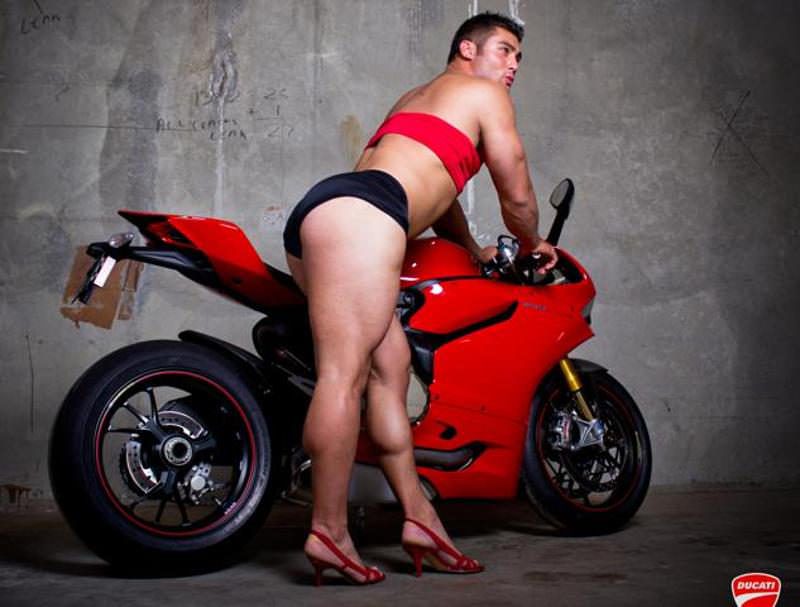
But even in the fanboy world of superheroes, there are signs of real change. The American TV show, Jessica Jones, turns the sexed-up female superhero on its head: Jones fights crime in jeans and tees, and does not need to team up with a male hero to be effective. In more conservative Pakistan, an award-winning animated show (including an International Emmy), Burka Avenger, has a teacher by day fight crooks by night, to save girls’s schools from shutting down.
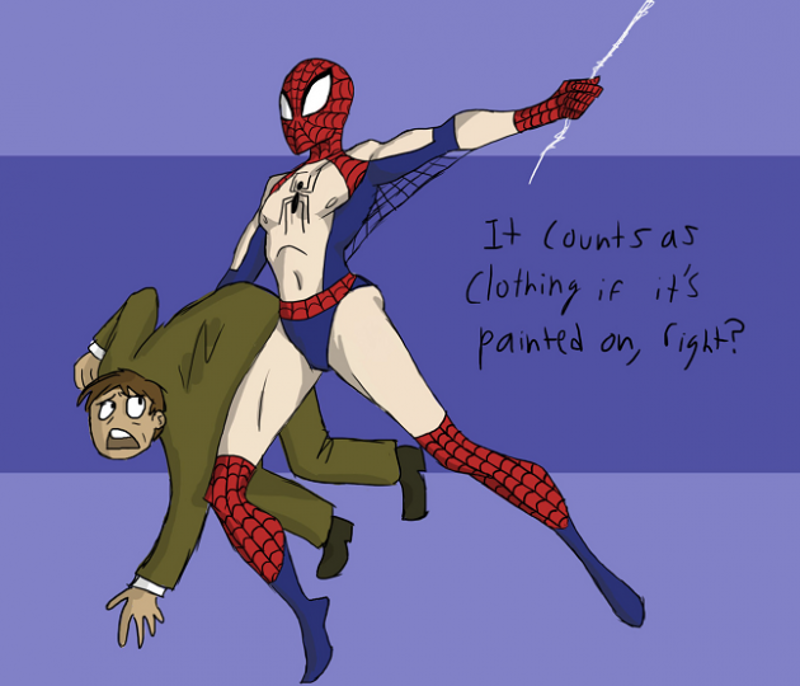
Pop culture doesn’t always get gender reversal right, though. Titan’s ‘Kiran’ ad, and one of Biba’s ads (on giving, rather than taking, dowry) faced flak for being reverse sexist. While Marvel makes Jessica Jones on the one hand, in another series — Daredevil — a character still gets away with the remarkably sexist ‘pussy’ to mean a weakling.
Clearly, it’s a work in progress. But at least we’re having the right conversations.
Making a point
5 of the greatest gender equality statements made internationally in recent times
Guerrila Girls: An anonymous group of feminist artists, Guerrilla Girls fight sexism and racism in the art world. In 2014, they questioned why women have to be naked to get into music videos. Their poster is a spin-off on an earlier one about the ratio of women artists to nudes that were female at the Metropolitan Museum of Art, New York.
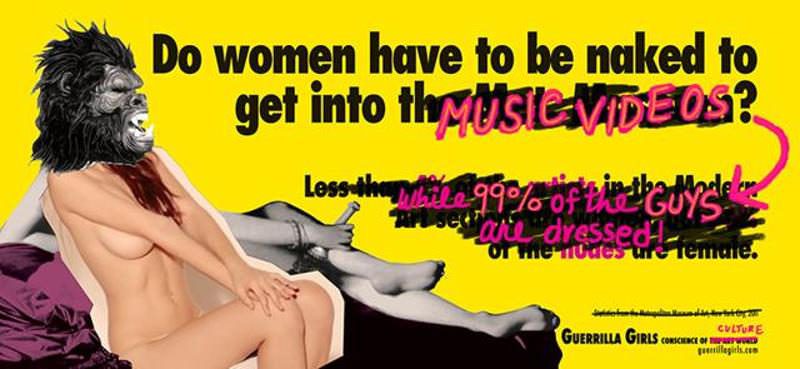
Oppressed Majority: The French short film Majorité Opprimée (Oppressed Majority) by screenwriter and director Eléonore Pourriat, is set in a world where gender roles are reversed. It took the internet by storm in 2014 when English subtitles were added. The film depicted the daily indignities, risks that women often face because of their appearance, and discrimination in the workplace.
Bearded Model: Last year, 23-year-old Harnaam Kaur posed in a vintage-style bridal gown. The photo shoot went viral. Since then, Kaur, who has a condition that causes her to grow excessive body hair, has even walked the ramp, challenging stereotypes.
Women in Movies:?In 2014, The New York Film Academy took a closer look at women in films. They found that, in the top 500 films, 30.8 per cent of speaking characters were female, 28.8 per cent wore sexually revealing clothes (as opposed to 7 per cent men). And oh, 77 per cent of Oscar voters are men.
HeForShe campaign: Actor Emma Watson launched a solidarity campaign for gender equality — HeForShe, initiated by the UN, in 2014. Watson spoke about the need for men to get involved in promoting women’s rights and also clarified that being a feminist is not equal to being a man-hater.
Co-authored by Manali Shah and Sarit Ray (@saritray2001) and originally published in HT48Hours on April 7, 2016.
